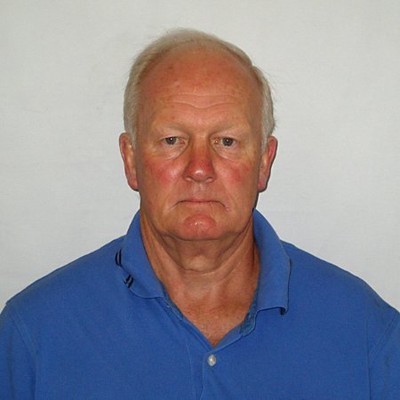2025 | Volume 26 | Issue 1

Dr Jarvis Hayman
Dr Jarvis Hayman’s life is a testament to resilience, curiosity, and the pursuit of knowledge. Born during World War II, he grew up with a father stationed with the RAF in the Middle East—a man he didn’t meet until he was five. This absence instilled a strong sense of independence, further fostered by many trips exploring Scotland’s hills and mountains. These formative years laid the foundation for a life marked by two distinct and highly successful careers—surgery and archaeology.
A pivotal influence in his early life was his aunt, who, despite living with severe cerebral palsy displayed remarkable intelligence and determination. Inspired by her resilience, Dr Hayman resolved to pursue a career in medicine, driven by a desire to make a meaningful difference in people’s lives.
From medicine to regional Australia
At school in Aberdeen, Dr Hayman developed a love for history and geography, and an interest in Australia—a land of opportunity with a population of just 9.5 million in the 1950s. After graduating in medicine from Aberdeen University Medical School in 1966, he defied expectations by foregoing surgical training to work as a Senior Resident Medical Officer at Ballarat Base Hospital in regional Australia.
His decision led him and his wife Rosemary, a nurse, on an adventurous journey. Sponsored by the Victorian Hospital and Charities Commission, they arrived in Melbourne in December 1967, the day before Prime Minister Harold Holt disappeared at Portsea.
“It was a leap of faith,” Dr Hayman says. “Arriving in Australia’s very different conditions—including a severe drought and devastating bushfires—was in stark contrast to the conditions in Scotland and took a bit of adjustment. But we embraced the challenges and rewards of regional life, making many friends within the community.”
Returning to Scotland and a surgical career
In 1970, Dr Hayman returned to Scotland to train as a general surgeon, gaining FRCSEd. Four years later, now with three daughters, the family returned to Australia, where he gained valuable experience at the Prince of Wales and Prince Henry Hospitals. He attained FRACS before moving to Goulburn Base Hospital in New South Wales as a visiting medical officer in General Surgery. His work in regional surgery brought much professional satisfaction—forming lasting ties within the local community.
Reinventing life through archaeology
When arthritis in his hands forced him into early retirement in 2001, Dr Hayman turned his attention to his lifelong interest in history and archaeology.
History was always of interest to him so he enrolled in a Graduate Diploma in Arts (Archaeology) at the Australian National University (ANU). He progressed to a Master’s degree focused on the Scottish Highland Clearances and over two summers, conducted fieldwork surveying abandoned settlements in the Highlands.
Determined to merge his medical expertise with his archaeological interests, Dr Hayman embarked on a PhD under Professor Marc Oxenham’s supervision. “I wanted to combine my medical and archaeological knowledge by undertaking further research.”
His research focused on improving methods of estimating the time of death in decomposed human bodies.
He completed his PhD in 2013, drawing on data from the National Coronial Information System Database and attending autopsies at the Victorian Institute of Forensic Medicine. His research also included work at Texas State University’s Forensic Anthropology Research Facility, supported by an Endeavour Research Scholarship from the Australian government. Dr Hayman subsequently became a Visiting Fellow at ANU and authored three books on human body decomposition in collaboration with Professor Oxenham.
Words of wisdom for future generations
Looking back, Dr Hayman reflects on the privilege of having had two deeply fulfilling careers. His transition from medicine to archaeology highlights the value of embracing intellectual curiosity and lifelong learning.
“It was challenging yet rewarding to combine science with historical context,” he says.
To young surgeons, he offers two pieces of advice. First, consider a career in regional surgery. The opportunity to immerse yourself in a community provides not only professional fulfillment but also a rewarding family life. Second, cultivate interests outside of medicine. Pursuing intellectual passions beyond one’s primary career can provide balance and pave the way for a meaningful retirement.
Dr. Hayman’s journey—from the operating theatre to archaeological digs—is a powerful reminder of the potential for reinvention at any stage of life and the enduring rewards of following one’s passions.